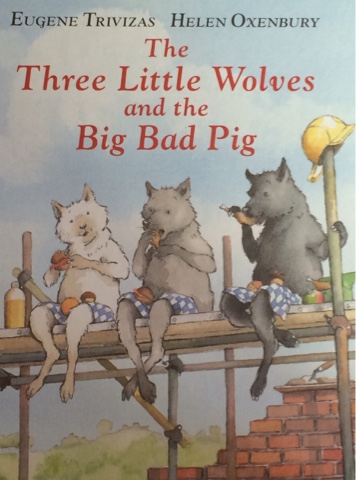Patch #320 The essence of fairy tales
Original Post
The lessons I taught in elementary school are much on my mind these days. For example, I used to ask my students why folk tales, which are fictional, were shelved in the non-fiction section of our library. My explanation to them was that, in spite of being "pretend," folk tales aimed to teach us truths about ourselves and the human condition.
And while I never went so far as to teach the word "allegory," for today's purposes the term fits ...
With that in mind, let me provide you with a synopsis of The Three Little Wolves and the Big Bad Pig ...
which is a delightful reversal on the classic Three Little Pigs.
As any child could tell you, it begins with three characters setting out on their own with marching orders from their mother to make a home for themselves. Clever creatures that they are, the protagonists in this story start out building a house of bricks ...
which predictably foils the villainous Big Bad Pig ...
But the plot twist is that the pig "isn't called big and bad for nothing" and he proceeds to destroy one house ...
after another ...
with a succession of increasingly devastating results ...
At which point the three little wolves decide that there's something wrong with either their reasoning or their building materials. And here's where the modern-day political allegory element kicks in: the wolves decide to build a house of flowers ...
The fragrance totally enchants the pig who "realized how horrible he had been ... and resolved to be a big good pig" so that in the end they all live happily ever after ...
Dare I hope?























